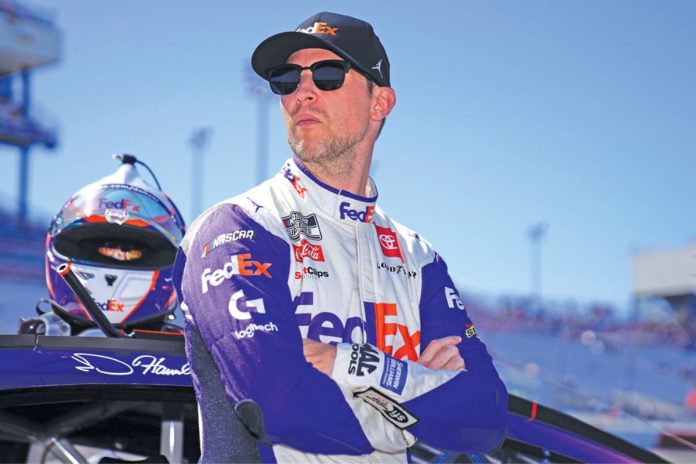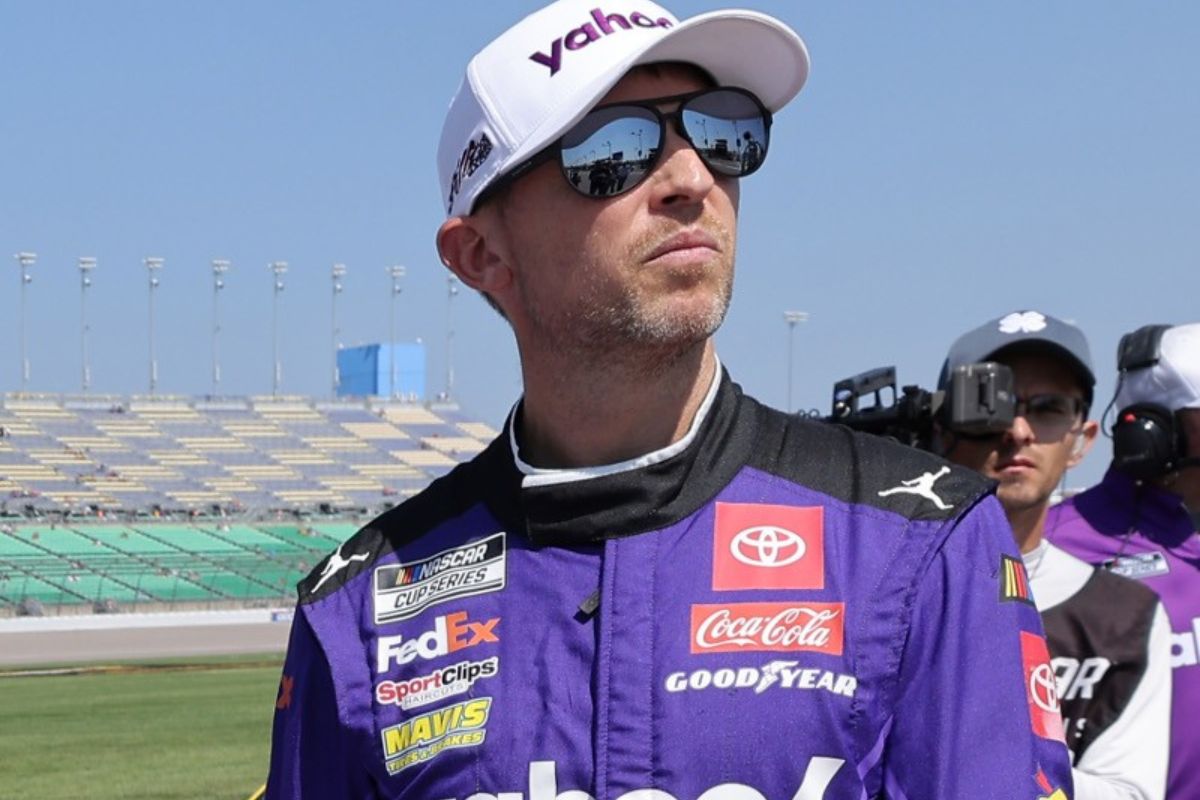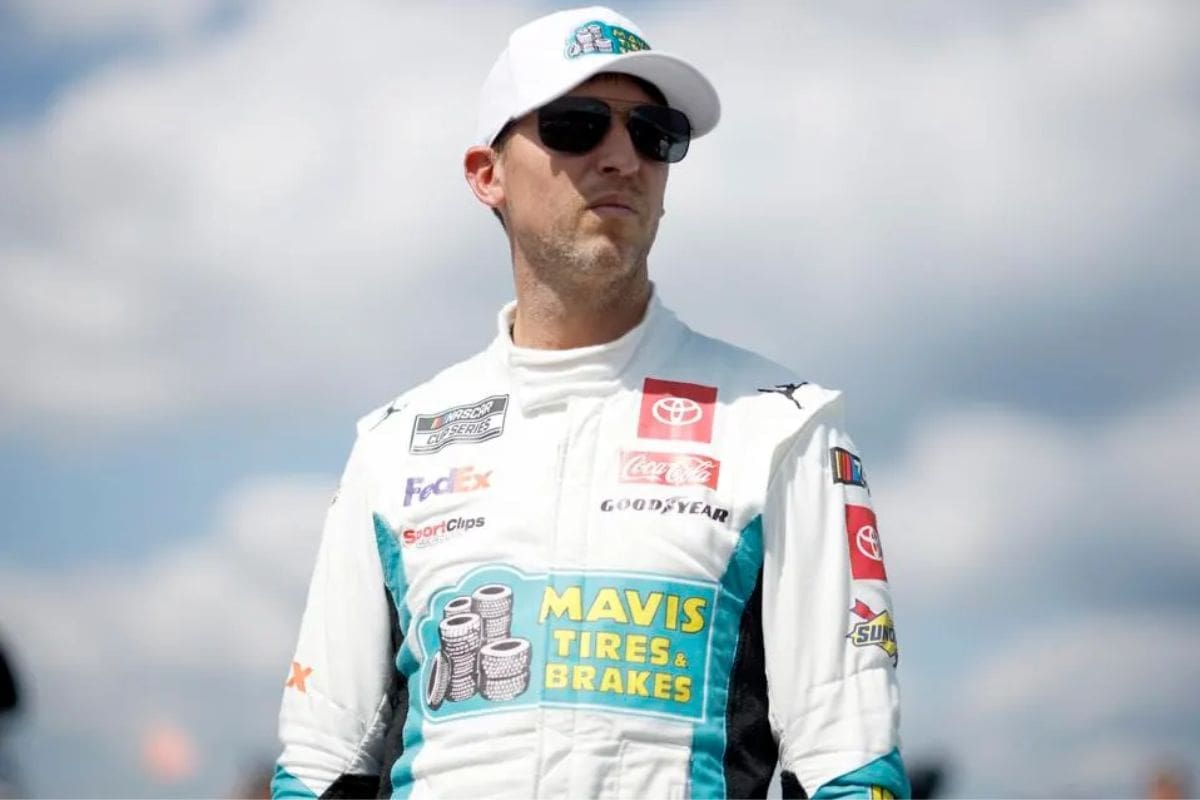Hamlin’s Confidence Backfires: In NASCAR, Denny Hamlin’s recent race at Texas Motor Speedway exemplified a crucial misstep, where his unyielding confidence may have undermined his performance. Opting for an aggressive strategy, Hamlin pushed his vehicle and skills to the limit, but this approach did not yield the anticipated victory. Instead, it highlighted a critical oversight in risk management that could have broader implications for his standing in the championship race. As the dust settles, the motorsports community is left pondering whether this incident will prompt a strategic reevaluation not only for Hamlin but also for his team and competitors.
Key Takeaways
- Denny Hamlin’s aggressive strategy at Texas Motor Speedway led to a disappointing finish affecting his championship standings.
- Hamlin’s decision to push limits on tire degradation and fuel load contributed to his race challenges.
- The race included 16 caution laps, which influenced Hamlin’s strategy but ultimately complicated his aggressive approach.
- Post-race, Hamlin acknowledged his mistakes and the need to learn from the high-risk decisions made.
- Concerns were raised about NASCAR’s race management, particularly the fairness and timing of caution laps.
Hamlin’s High-Stakes Decision at Texas Motor Speedway
Denny Hamlin might’ve been wise to accept second place in last Sunday’s Texas Motor Speedway race of AutoTrader EchoPark Automotive 400. With all the chaos and drama that unfolded, a runner-up spot was actually quite commendable for the JGR driver. Trying to overtake Chase Elliott for the win with just two laps remaining was nearly futile. Elliott had been aggressive all race long, making passing incredibly difficult.
Despite the risk, Denny Hamlin, fueled by his fast car and a desire for his third win of the season, decided to take a shot. But instead of clinching victory, he found himself spinning out and colliding with the wall. Maybe the temptation was just too strong for Hamlin to resist. With his confidence soaring, he couldn’t resist the urge to go for it.
This choice, while audacious, highlights a broader philosophy prevalent in motorsports: the necessity to occasionally venture beyond comfort zones to clinch extraordinary outcomes. However, the inherent risk in pushing machinery beyond its conventional operational envelope is the increased likelihood of mechanical failure or driver error, both of which can have immediate and disastrous consequences in racing.
The Role of Caution Laps in Hamlin’s Fate
With a whopping 16 cautions and six cars failing to finish, Texas certainly delivered on its reputation for drama. While the frequent restarts gave many drivers a chance to advance, for Hamlin, it was the caution laps toward the end that played into his strategy against Elliott. This situation pushed him to take a gamble earlier than planned, attempting to seize the advantage with just two laps remaining.
Initially, cautions allowed for conservation efforts, which are critical in the closing laps of a race. However, the final caution lap led to a significant pit stop decision that ultimately saw Hamlin losing a crucial position. This decision, influenced by the earlier cautions, demonstrates the complex interplay of risk and reward that drivers and their teams must navigate.
“I think if I have two or three laps, if he clears me, if he controls the restart clears me if I have two or three laps, I’ll get back around him. I mean, that’s my irrational confidence, but that’s what I think will happen. When we go into green-white-checkered, it’s all about who can clear first. Whoever clears first is going to win the race.” – (Denny)
Hamlin’s Post-Race Reflections and Accountability
Throughout this season, the No. 11 JGR Toyota Camry has undeniably been among the top three speed demons on the track. It’s this undeniable speed that’s been driving Hamlin to constantly test the limits and compete for victory every Sunday.
- Recognition of Mistakes: Hamlin admitted that his decision to push for the lead might have been overly ambitious, considering the race conditions and the performance of his car relative to others.
- Acknowledgment of Consequences: He noted the direct impact of his choices, specifically how they compromised his position and safety on the track, ultimately affecting his standings in the race.
- Learning and Adaptation: Reflecting on the event, Hamlin emphasized the importance of learning from this experience to refine his strategies and decision-making processes for future races.
“But damn, two weeks in a row of not getting the finish we deserve and this one’s on me for sure. In hindsight, yeah, I should have took second but damn, I mean, I just want to win; the extra five bonus points were just worth it to me, and the extra sticker on the side of that car is worth it to me.” – (Denny)
Questioning NASCAR’s Handling of the Race Finish
As the race heated up and the tension reached its peak, every driver was gunning for a better spot at the finish line. But with all the bumping and grinding happening on the track, it seemed inevitable: caution after caution. Yet, according to Hamlin, there was something fishy about the amount of time spent circling the track under caution.
In a crucial late restart, a caution waved with 8 laps remaining dwindled down to just 2 to decide the race’s fate. What’s more puzzling is there was no sign of a safety car or debris obstructing the track, yet caution laps kept ticking away.
Analyzing NASCAR’s decision-making, it becomes important to contemplate the criteria used for initiating a caution lap. Transparency in these decisions is essential for maintaining the trust of the drivers and the fans. If competitors feel that cautions are used inconsistently or strategically, it spoils not just the outcome of a single race but the sport’s credibility as a whole.
“No question, we burned too many laps under caution. I mean, there were no safety vehicles on the track. They didn’t open pit road, I don’t know what they were doing other than just winding laps, maybe they were under commercial? Damn it, when the track is clear and it’s ready to race, you put out one to go, and they didn’t do that.” – (Hamlin)
Implications for Hamlin and the Championship Standings
Denny Hamlin’s disappointment in Texas wasn’t just about missing out on victory; it also cost him his position atop the driver standings. With a disappointing 30th-place finish, he’s now slipped to third place. Meanwhile, Elliott’s victory catapulted him to fourth in the standings.
- Psychological Impact: The fallout from Texas exerts immense mental stress on Hamlin. Recovering from a setback in such a high-stakes environment requires not just physical strength but a resilient mindset. The challenge now is for Hamlin to recalibrate and refocus, avoiding the pitfalls of overcompensation in subsequent races.
- Strategic Adjustments: Moving forward, Hamlin’s team might need to revise their approach. Prioritizing consistency over aggressive tactics could be essential. Strategic recalibration will be necessary to accumulate points steadily without risking further setbacks.
News in Brief: Hamlin’s Confidence Backfires
The incident at Texas Motor Speedway highlights the complexities inherent in NASCAR racing strategies. Hamlin’s bold decision-making, though initially seen as a proof of his confidence, ultimately emphasized the delicate balance between risk and reward.
This event not only serves as a meaningful lesson for Hamlin but also impacts broader championship dynamics. Reflecting on this experience, a more subtle approach to strategy may benefit competitors in future races, ensuring that ambition is tempered with strategic prudence.
Our Reader’s Queries
Q. When did Denny Hamlin break his back?
A. Hamlin’s day took a turn for the worse at the Auto Club 400 on March 24, as he found himself entangled in a wreck. Following the incident, he was swiftly airlifted to a nearby hospital. Medical assessments revealed the unfortunate diagnosis: a compression fracture in his back.
Q. Did NASCAR punish Denny Hamlin?
A. NASCAR levied a $50,000 fine against Hamlin, coupled with the deduction of 25 driver points. Initially, Hamlin conveyed his acceptance of NASCAR’s ruling, opting against an appeal. However, in a surprising turn of events, he announced his decision to pursue the appeals process on Friday.
ALSO READ: Hamlin’s Horsepower Rant: No.9 Exposes





